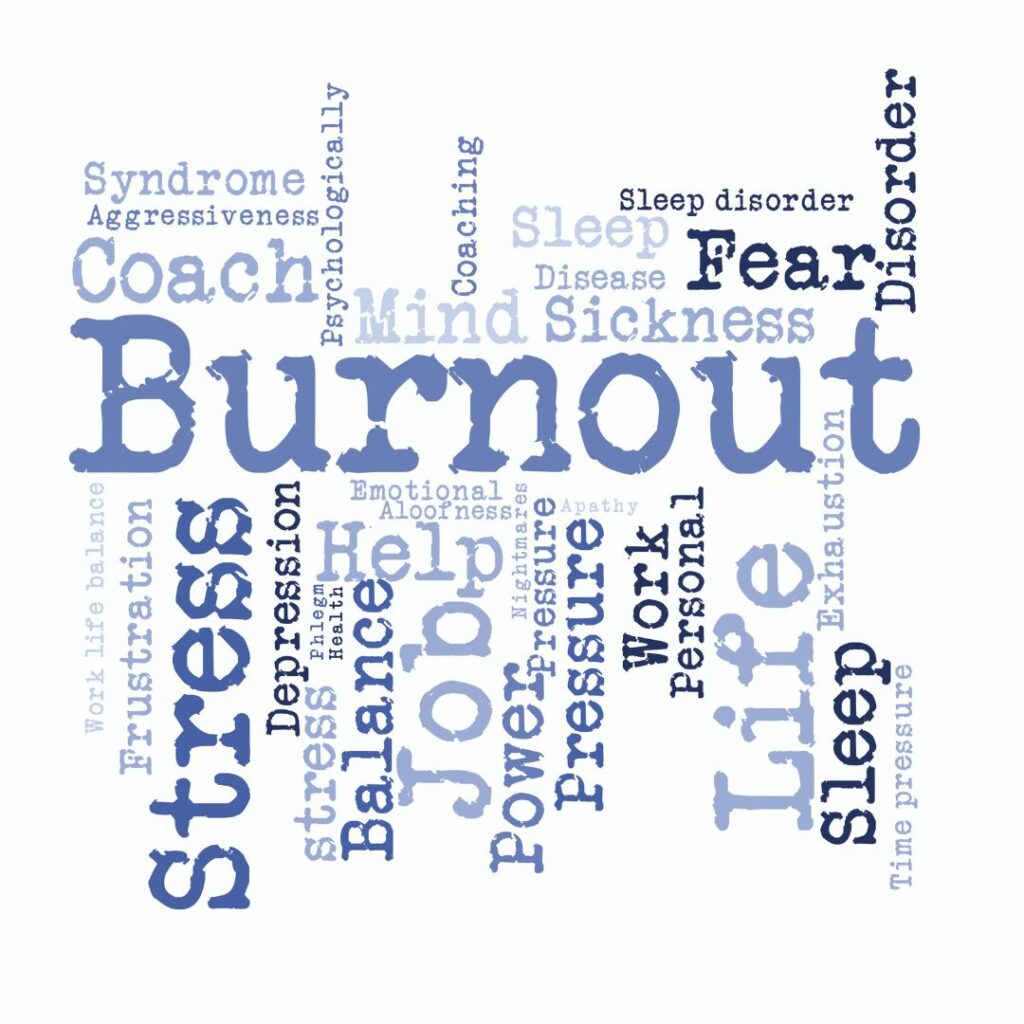A recent study of 2065 participants across 40 countries reported that 38. 1% of those participants had experienced burnout in the last year. In 2021 this same study reported 34. 7% of people had experienced burnout, so, not surprisingly, given everything we’ve come through, it’s on the rise.

What exactly is burnout?
Well, at a high level, it’s the result of dealing with high levels of stress for too long.
There are models used to determine whether you’re at that stage of burnout. For example, the Maslach burnout inventory determines burnout based on three characteristics.
identifying burnout

- You are feeling exhausted.
- You are mentally distancing yourself from your job, or you have negative or cynical feelings in relation to your job.
- Your on-the-job performance has reduced.
A 2018 workplace burnout survey by Deloitte attributed burnout to three key factors that may be present in your workplace.
- A lack of support or recognition from leadership.
- Unrealistic deadlines or results, expectations
- Consistently working long hours or working on the weekend.
SELF-CARE practice 1 – support
Now, supporting staff is a two-way street. Great leaders consistently ask their team members, what do you need from me? How can I help?

Support can also be in the form of a compassionate ear or a sounding board providing advice.
If you prefer these catch-ups to be a little more formal, experiment with a standing agenda that covers what’s going on for you and how I can help with that.
If you prefer these catch-ups to be a little more formal, experiment with a standing agenda that covers what’s going on for you and how I can help with that, and for those of you who prefer to help by leaping in and doing a gentle reminder that help can be in the form of listening or affirming or asking questions and making introductions.
And if you’re listening to me and thinking, yeah, well, I could do with a bit more support.
- What might that support look like?
- Who’s the best place to provide you with that support?
- Can you ask that person, how can you ask that person for support in a way that makes it easy for them to provide it in the way you need it?
Now we are each responsible for asking for support. And as leaders, we are also responsible for being proactive and providing support where it’s needed, providing your flavour of support, when it’s not wanted, it can feel a bit like being micromanaged, and most people don’t respond well to that, so don’t assume, ask, even just the asking can bring relief.
Burnout can be the downstream effect of high levels of stress going on for a long time. The challenge with this is that we’re comfortable with what’s most familiar, and we’re all geniuses at the art of adapting. So what does this mean for our stress response? Often, we simply don’t realise how stressed we are.
A sudden stress response
Let me give you an example. There was a time when I was working as a project manager in London, and the project had two engineering teams. One of those teams was based in the UK, and one was based in the USA and Houston, so I had a little bit of travel going on. Now, because of that travel. Jet lag was a pretty common occurrence, and that was why I felt tired, I thought. Plans change, and the organisation I was working for decided that it didn’t need the product that my project was creating, so the project was shut down.
I was responsible as the project manager for communicating that news and for walking side by side with my team as we travelled the redundancy journey together.

I took some time off at the end of that and was enjoying a life of leisure.
The luxury of going to the gym at nine am, gazing at the flowers along the way home, and enjoying the sun on my face.
You get the picture. Well, one morning after my workout at the gym, I was walking home and I felt this tap on my heel and a huge surge of adrenaline coursed through my body. My water bottle had fallen out of my bag, and it had tapped me on the heel as it fell down. At that moment, I realised that I hadn’t felt that flight or fight response that comes from that adrenaline surge in quite some time. Why? Well, I’ve been living in flight or fight constantly through that whole project, and I didn’t even know it.
SELF-CARE practice 2 – Breathing
Take a moment with me and observe how you habitually breathe.
- Is it deep into the bottom of your lungs?
- Is your tummy expanding and contracting?
- Are your shoulders moving?
- Are they not moving?
- Are your shoulders moving up to your ears?
- Are you breathing just into the top of your lungs?

If you are, this is called shallow breathing, and for some people, shallow breathing can make them feel anxious. Now, you have your baseline.
We’ve checked in on how you’re habitually breathing, so I’m inviting you to breathe with me. Let’s breathe in for four counts. Nice and slow. We’ll hold it for four. Breathe out for four and hold for four counts. Here we go. Good. So tell me, how do you feel? In that brief moment, you stepped out of fight or flight with your breathing.
So do this type of breathing often and on purpose. Schedule it in your calendar or set an alarm on your phone. The third thing that you can do is to proactively avoid burnout by creating distance.
SELF-CARE practice 3 – creating distance
Creating distance from your work mentally, physically and emotionally.
Now, physical distance is relatively transparent in some respects. Go for a walk at lunchtime or don’t come to work on the weekend or after you’ve had your dinner.

Don’t log in from home, unless that’s where you’re working from. Then there’s the more insidious stuff. Check your email on your phone and you’re right back in the midst of work.
You’re back to thinking and feeling whatever it is you’re dealing with, whatever is in that email. When you’re on holiday, you’re on holiday. None of that oh, it’s just one meeting or just send this one email. Lock your work phone in the hotel safe if that’s what it takes, but make sure you have that distance from work, but I have responsibilities, I hear you say, and it’s true you do.
The responsibility that beats them all is to take care of your health and well-being so that you have the energy necessary to be there for your team. In 99. 9% of instances, there’s nothing so important that it can’t wait for when you’re meant to be back in the office. Mental and emotional distancing is interlinked because we feel what we think and think what we feel.
We have a number of frameworks at the Corporate Sage effect that’s going to help you to set those boundaries, to create that distance and to promote that active recovery. So there you have it.

- Get clear on the support you need and request it.
- Breathe and set breathing dates. Breathe slowly and deeply.
- Create distance from your work physically, emotionally and cognitively.

